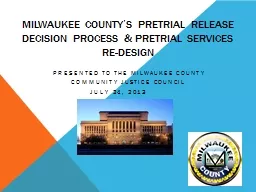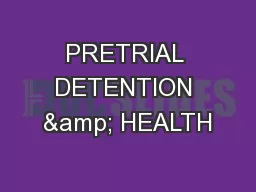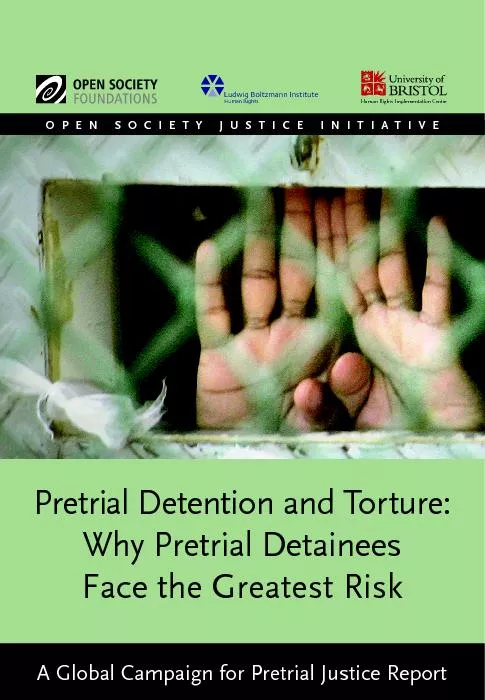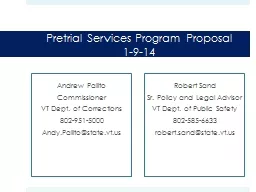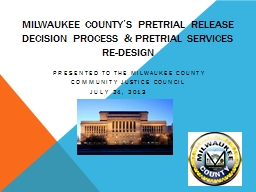PPT-Milwaukee County’s Pretrial Release Decision Process &
Author : marina-yarberry | Published Date : 2016-03-16
redesign Presented to the milwaukee county Community justice council July 24 2013 WHY DID WE REDESIGN OUR SYSTEM American Bar Association Standard 1011 The law
Presentation Embed Code
Download Presentation
Download Presentation The PPT/PDF document "Milwaukee County’s Pretrial Release De..." is the property of its rightful owner. Permission is granted to download and print the materials on this website for personal, non-commercial use only, and to display it on your personal computer provided you do not modify the materials and that you retain all copyright notices contained in the materials. By downloading content from our website, you accept the terms of this agreement.
Milwaukee County’s Pretrial Release Decision Process &: Transcript
Download Rules Of Document
"Milwaukee County’s Pretrial Release Decision Process &"The content belongs to its owner. You may download and print it for personal use, without modification, and keep all copyright notices. By downloading, you agree to these terms.
Related Documents

